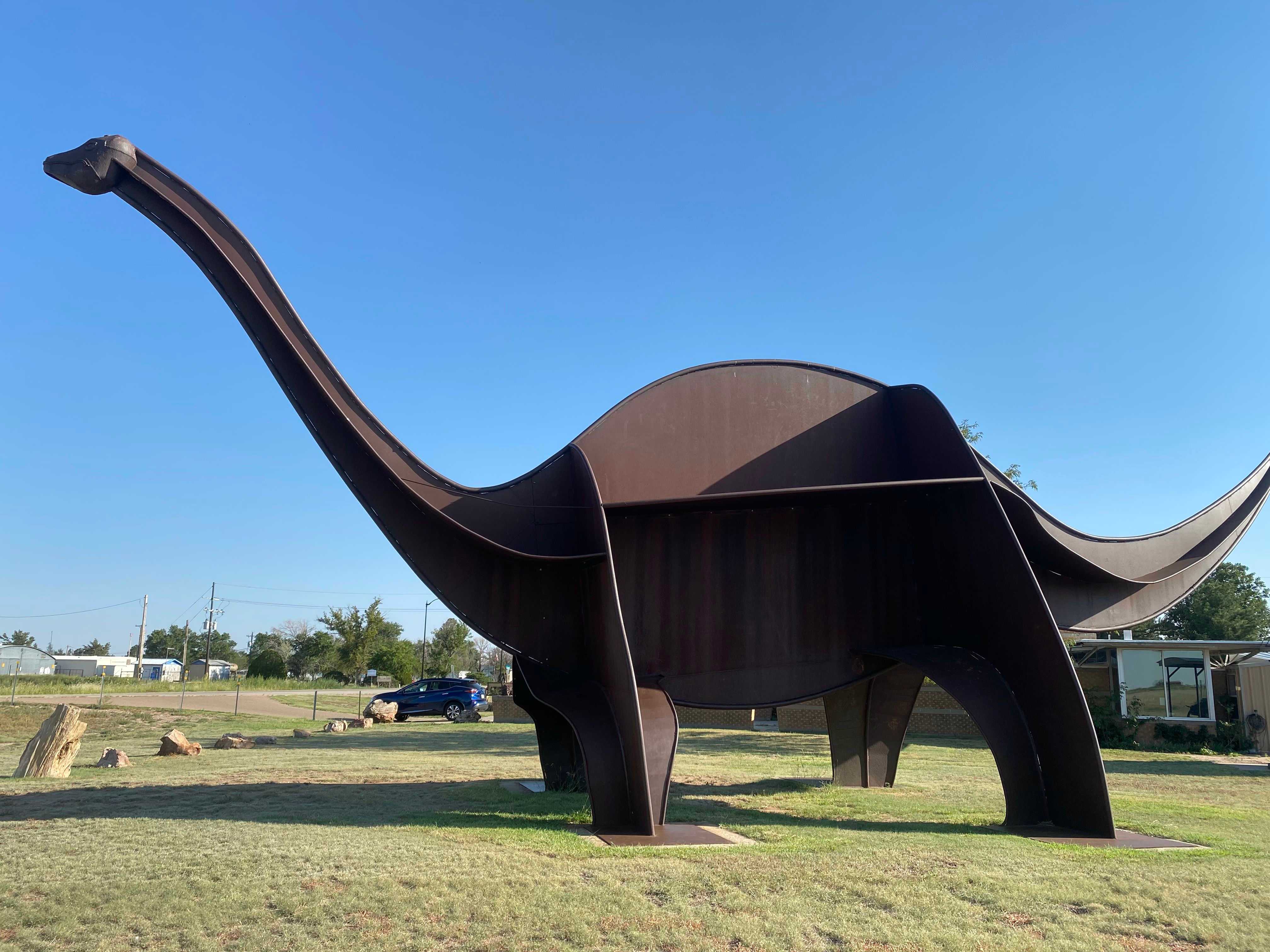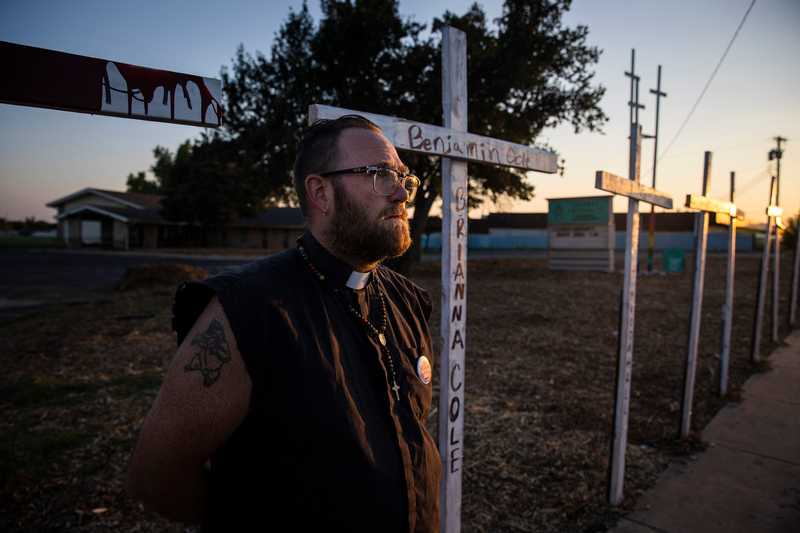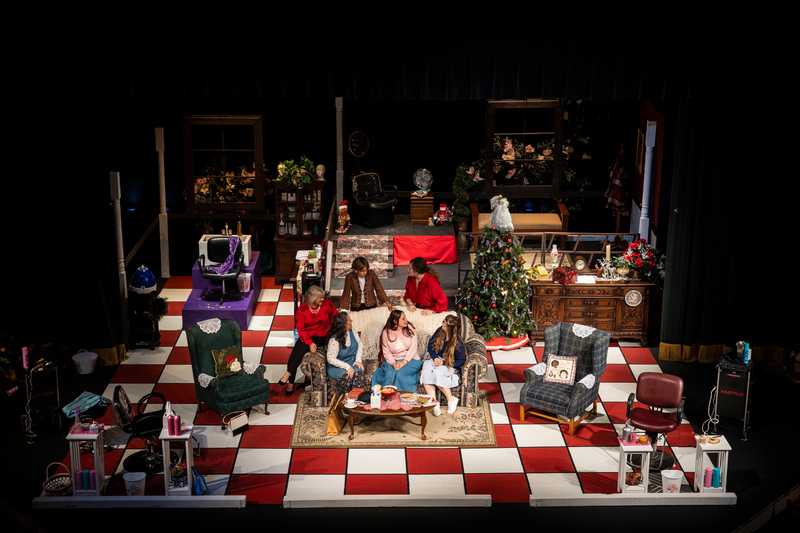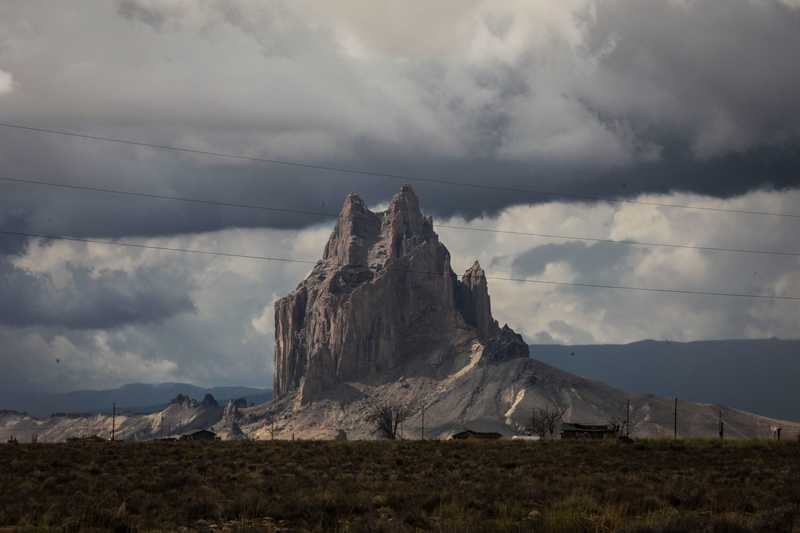Los Angeles team
Oct. 27, 2022
For a newcomer to America, an unexpected welcome from a 9-ton metal dinosaur

BOISE CITY, Okla. — Some people have the Washington Monument or the Golden Gate Bridge or Mount Rushmore to associate with their first memories of a trip to the United States.
I have Cimmy the 9-ton metal dinosaur.
I first met Cimmy when I was about 5, when my mom, brother, and I drove here from our home in Mexico to visit my father, who had moved to Oklahoma to work at a hog farm. Later, the rest of the family would immigrate to the United States, but in the two years or so he lived in Boise City, we only got to visit him as a family once — for two weeks in, we think, 1998.
Since I was just a kid, I remember little of the trip except for two things: a souvenir with an Oklahoma backdrop — if you spun it fast enough, it created a little tornado; and I remember Cimmy, who stands outside the Cimarron Heritage Center at the fingertip of the state, and would then have been less than a decade old.
I drove back there on Sept. 7, hoping to pay some tribute to this random, outsize relic from my youth, and maybe to ask a few questions of other families stopping by. Cimmy is not a big topic of conversation in our family, but he felt somehow tied to our story.
Later, I called my father to ask about what he recalled from this area. “For me, it was the first time working in the US and trying to get some sense of how things work,” he said. He added that one of the early surprises was “finding out that my English was not so good as I thought it was when I just came here.”
Recent stories from the Los Angeles team
While he lived here, my dad had a full-time job and juggled multiple side gigs with livestock, driving around 45 minutes to get to them — there was a particular gas station where he grabbed his doughnut and coffee on the way. He was simultaneously sending money to Mexico, and saving to bring the rest of the family over.
He told me the town was so small that they didn’t do mail delivery, so he had to go to the post office to check his post office box. The way he communicated with the family was through long-distance calls, at a rate of a dollar per minute. When he mentioned that, I remembered collecting the long-distance cards he had used.
A lot of this I had never known or, if I’d had, I had forgotten it.
At the center, I read the sign for Cimmy, which is a rendering of an apatosaurus — the dinosaurs with the long necks — by Texas artist Joe Barrington. Cimmy is 65 feet long and 35 feet tall, the sign said, a size “calculated from 80% of bones that were excavated in western Cimarron County in the 1930s.” I noticed no one else stopped by to see if the center was open.
I walked around Cimmy and imagined myself as a child running under his belly and around his legs. Maybe my baby brother, new to walking at the time, would have been trying to follow me. Mom would have watched over us while Dad was off at work.
Looking back, Cimmy is smaller than I remembered. Maybe that’s the way it is whenever anyone returns to a place that looms so large in their memory. But our family story — where we came from, how we got here, the sacrifices my parents made along the way — struck me as more impressive than ever.
Join the discussion: Comment on this story.
Credits
- Reporters: Julian Benbow, Diti Kohli, Hanna Krueger, Emma Platoff, Annalisa Quinn, Jenna Russell, Mark Shanahan, Lissandra Villa Huerta
- Photographers: Erin Clark, Pat Greenhouse, Jessica Rinaldi, and Craig F. Walker
- Editor: Francis Storrs
- Managing editor: Stacey Myers
- Photo editors: William Greene and Leanne Burden Seidel
- Video editor: Anush Elbakyan
- Digital editor: Christina Prignano
- Design: Ryan Huddle
- Development: John Hancock
- Copy editors: Carrie Simonelli, Michael Bailey, Marie Piard, and Ashlee Korlach
- Homepage strategy: Leah Becerra
- Audience engagement: Lauren Booker, Heather Ciras, Sadie Layher, Maddie Mortell, and Devin Smith
- Newsletter: LaDonna LaGuerre
- Quality assurance: Nalini Dokula
- Additional research: Chelsea Henderson and Jeremiah Manion
© 2022 Boston Globe Media Partners, LLC


